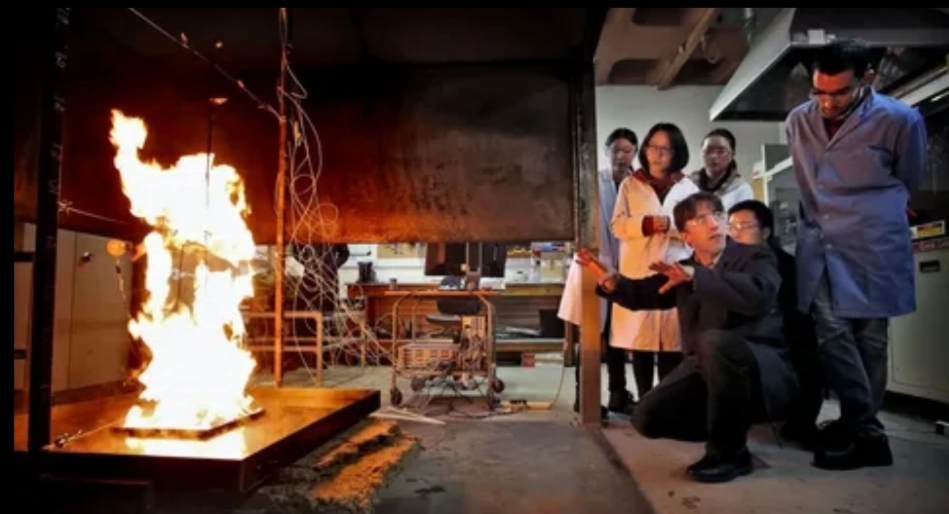Fire is both a force of nature and a fundamental part of many ecosystems. Understanding how fire behaves can be crucial for both safety and effective management, whether you’re a homeowner, a firefighter, or simply someone interested in the dynamics of fire. For those in London, obtaining a Fire Safety Certificate London can also be an important step in ensuring proper safety measures are in place. This blog explores how fire moves, the factors influencing its behavior, and strategies to stay ahead of it.
The Basics of Fire Movement
Fire is essentially a chemical reaction involving heat, fuel, and oxygen. This reaction, known as combustion, releases energy in the form of heat and light. The way fire moves is influenced by a variety of factors, including the type of fuel, the topography of the land, and the weather conditions.
Types of Fire Behavior
Fire can behave in different ways depending on its environment. One common type is a surface fire, which burns the ground layer of vegetation. These fires typically move slowly and can be easier to control. Another type is a crown fire, which spreads through the tops of trees. Crown fires are more dangerous because they can travel quickly and cover large areas. There are also ground fires, which burn beneath the surface and can smolder for long periods, often re-emerging later.
Factors Influencing Fire Spread
Understanding the factors that affect fire spread is key to predicting its behavior and implementing effective safety measures.
Fuel
Fuel is any material that burns, such as trees, grass, or buildings. The type, amount, and arrangement of fuel significantly impact how a fire spreads. For example, a dense forest with lots of dry underbrush will burn more intensely than a sparse area with wet grass. The arrangement of fuel also matters; if fuel is scattered, fire may spread more slowly compared to a continuous fuel bed.
Weather
Weather conditions are a major factor in fire behavior. Wind, in particular, can greatly influence the direction and speed of a fire. Strong winds can carry embers far from the main fire, starting new fires and making containment more difficult. Temperature and humidity also play roles; hot, dry conditions can cause fuel to ignite more easily and burn more rapidly.
Topography
The shape of the land affects how fire moves. Fires tend to burn faster uphill because the flames can reach more fuel as they climb. This is known as the “slope effect.” Conversely, fires may move more slowly downhill or across flat terrain. Additionally, features like ridges and valleys can direct and channel fire, sometimes creating complex patterns of movement.
Predicting and Managing Fire Behavior
Staying ahead of a fire involves predicting its behavior and taking proactive steps to manage it.
Fire Behavior Models
Fire behavior models use data on weather, fuel, and topography to predict how a fire might spread. These models can help firefighters and land managers make informed decisions about how to approach containment. While no model can predict fire behavior with complete accuracy, they provide valuable insights for planning.
Creating Defensible Space
One effective way to stay ahead of a fire is by creating a defensible space around your home. This involves clearing flammable materials from around your property, such as leaves, wood piles, and dead vegetation. By reducing the amount of fuel near your home, you decrease the risk of a fire spreading to your property.
Firebreaks and Controlled Burns
Firebreaks are gaps in vegetation or other barriers that prevent the spread of fire. Creating firebreaks can help control a fire’s movement and protect valuable areas. Controlled burns, or prescribed burns, are intentionally set fires used to reduce fuel loads and manage vegetation. These burns are carefully planned and monitored to ensure they don’t escape control.
Safety Measures for Fire Situations
If you find yourself in a fire situation, there are several safety measures you should take.
Evacuation Plans
Having an evacuation plan in place is crucial. Know the routes out of your area and make sure all family members are familiar with them. Keep an emergency kit ready, including essentials like water, medications, and important documents.
Fire-Resistant Building Materials
Using fire-resistant building materials can enhance the safety of your home. Materials such as fire-resistant shingles, siding, and windows can help protect your home from catching fire. Regular maintenance, like cleaning gutters and trimming trees, also contributes to reducing fire risk.
Conclusion
Understanding fire behavior is essential for effectively managing and staying safe from fires. By recognizing how fire moves and the factors that influence its spread, you can better prepare and protect yourself and your property. Implementing strategies such as creating defensible space, using firebreaks, and maintaining an evacuation plan will help you stay ahead of fire threats. Knowledge and preparation are key to minimizing the risks associated with fire and ensuring a safer environment for everyone, If you want to stay updated with posts like this, please follow us on World Explore Magazine.



